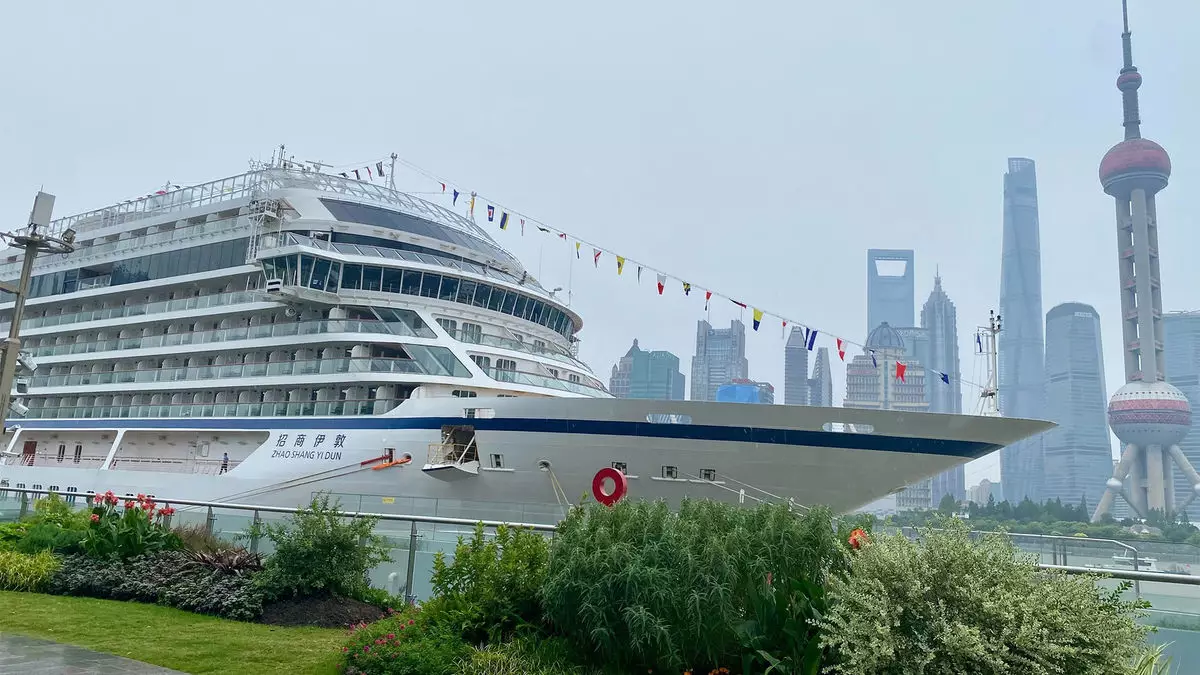In an unprecedented move bridging Western travelers with Asia’s vast tourist potential, Viking’s recent launch of its ocean cruises aboard the Yi Dun marks a significant evolution in the cruise industry’s approach to the Chinese market. This venture, born out of a partnership with the state-owned China Merchants Group, signifies not just the return of cruises to China post-pandemic but also an innovative attempt at catering to diverse cultural preferences within tourism.
After a hiatus exacerbated by the global pandemic, when Viking primarily cruised the Yangtze River, the introduction of the Yi Dun into ocean itineraries for English speakers is both timely and strategic. Viking’s inaugural 10-day cruise, which set off from Shanghai and journeyed to Shenzhen (including an overnight stay), stops at unique ports like Zhoushan and Xiamen which have been less explored by Western cruise lines. Here, Viking capitalizes on the dual opportunity of reigniting interest in Chinese destinations while tapping into the growing desire among Western travelers for authentic cultural experiences.
This innovative route not only allows Viking to present a China-centric experience to English-speaking tourists but also showcases the vibrancy of Chinese culture, cuisine, and landscapes through a carefully curated itinerary. The diverse culinary offerings onboard, heavily influenced by local flavors, provide guests a taste of China’s rich gastronomic heritage—thereby intertwining travel with cultural immersion.
However, merging two distinct markets—American and Chinese tourists—presents a set of challenges. The variances in traveler preferences are stark; while Chinese tourists may seek vibrant nightlife and casino offerings, the Western audience tends to favor relaxation and cultural exploration at sea. In response, the Yi Dun has no casino, making clear Viking’s aim to focus on leisure and enrichment rather than gambling—reflecting their commitment to a family-friendly environment while also respecting cultural tastes.
Mike Estill, COO of the Western Association of Travel Agencies, aptly observes the unique nature of this crossover product. Viking’s adjustments—ranging from menu changes to onboard programming—appear to navigate the intricacies of catering to visitors from vastly different cultural backgrounds. The decision to permit children onboard effectively acknowledges the familial nature of Chinese travel, creating a more inclusive atmosphere. Viking desires to tread a careful line, ensuring that North American patrons feel familiar with the Viking experience, while also delighting in the added cultural layers.
The current phase of Viking’s foray into the Chinese market is experimental, as reiterated by both Viking’s CEO Torstein Hagen and product development head Joost Ouendag. They acknowledge that success may take time, emphasizing a measured approach towards rebuilding tourism in a country that has been slow to re-establish itself as an international travel hub. This prudent strategy fosters a smoother reintegration of Western tourists, while simultaneously appealing to local travelers who are anticipated to start flooding back into the tourism scene.
The broader tourism landscape in China reveals that inbound travel has not yet reached pre-pandemic levels, indicating broader ramifications for the cruise industry in Asia. While demand is undoubtedly increasing, the figures remain critical for understanding how Viking and other cruise lines can navigate the competitive waters of this resurgent market.
Onboard, the Yi Dun embodies the signature Nordic design style of all Viking vessels, incorporating elements of serenity and warmth through features such as cozy lounges and a spa with hot and cold treatments. This commitment to quality is paralleled with a distinctly Chinese influence—like the stunning two-deck-high display of Chinese art that transforms throughout the day—creating a harmonious blend of aesthetics.
The cultural immersion doesn’t end at the ship’s railing. Viking’s thoughtfully arranged excursions offer various insights into Chinese traditions, including acrobatic performances and educational explorations of local landmarks. These guided tours are essential, as they offer an opportunity for enhanced engagement with China’s rich tapestry of culture—ensuring that language barriers are mitigated by proficient tour guides.
As Viking prepares to shift focus towards the Japanese market later this year and resumes its local cruise offerings in China, the cruise line’s reliance on a dual-market approach holds promise. The synergy of welcoming both Western tourists and local travelers stands as a testament to Viking’s commitment to evolving travel experiences. The endurance of the Yi Dun—and Viking’s broader strategy—will ultimately hinge on its ability to navigate both the cultural landscape and the ongoing dynamics of the post-pandemic tourism market in China, paving the way for a renaissance in cruise travel.


Leave a Reply